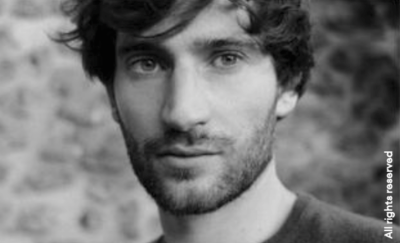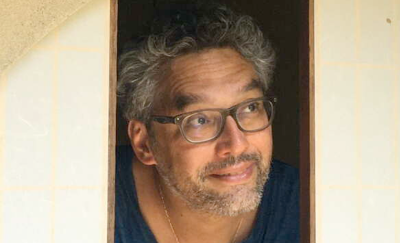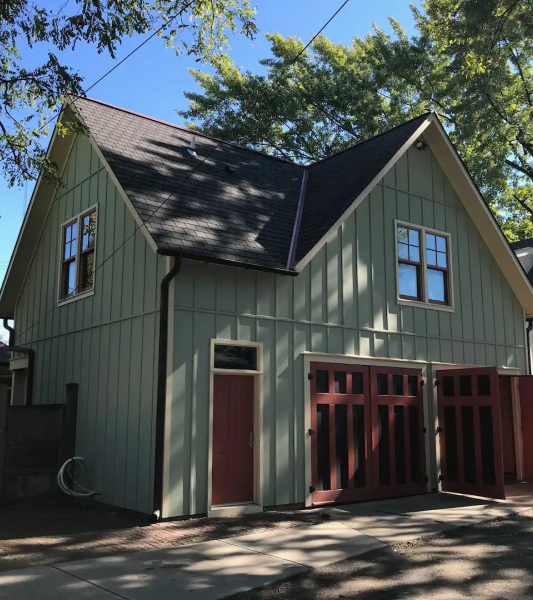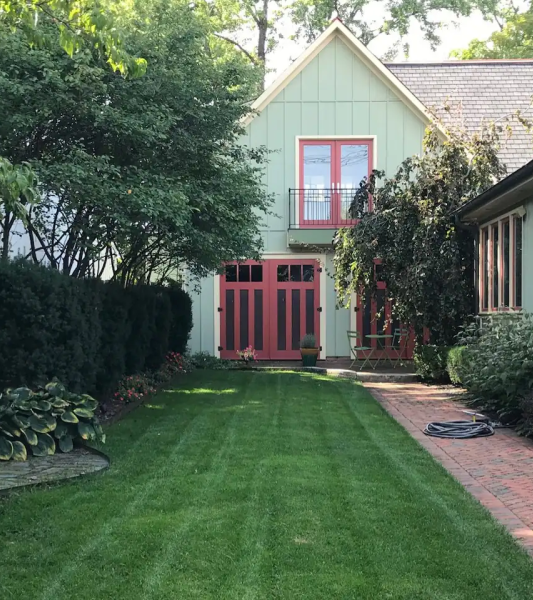
Everywhere you go, from Paris to Los Angeles, from Dakar to La Réunion, you will always find some cheap, colorful and strangely useless objects.
These memorabilia are not always known as “Chinese” even if “Made in China” and still, there are the humble segment of a globalized Chinese culture. It is somehow like a scattered puzzle.
My original idea is to collect these objects, to reconstitute their multiple itineraries, but also to meet people and compile vernacular stories about a scattered Chinese identity.
Last winter, I discovered the story of Dayton, depicted in the documentary film “American Factory”, directed by Steven Bognar and Julia Reichert (2019). In post-industrial Ohio, a Chinese billionaire opens a factory in an abandoned General Motors plant, hiring two thousand Americans.
Early days of hope and optimism give way to setbacks as high-tech China clashes with working-class America. This story is the starting point of my obsession with the Chinese history of America and about this very intriguing term of “Paper Sons and Daughters”.
The first wave of Chinese immigrants came in the 1870s, after the transcontinental railway connected the Pacific Coast to Chicago, a few years before the Chinese Exclusion Act prevented working-class Chinese from entering the U.S., except men who could prove they were American citizens – the origins of these Paper Sons and Daughters.
Who are the Paper Grandsons and daughters in 2024 America? What are the pages of their personal Dictionary?
Therefore, my story will be a journey inside the paradoxes of the history of the Chinese in the United States, their link with local realities, the mechanisms of assimilation, appropriation and rejection, and the reconstruction of an identity – new, hybrid, globalized.
This quest of these global-Chinese “Mythologies” as Roland Barthes depicted them will drive me from Ohio State University to schools and associative spaces, perhaps mahjong clubs and, of course, public spaces and also hospitals, maternities, cemeteries, factories, shops and restaurants.
As the Portuguese filmmaker Salomé Lamas defines it, parafiction designates a work at the intersection of ethnography, history, narrative, the work of memory and fiction as such. This is the exact literary mechanism that I put in place for this new project I am thrilled to start working on.

We are impatient to receive François-Henri Désérable at The Ohio State University. A warm thank you to those who have supported this project since January! See you in 2023!
The Center of Excellence and the Department of French and Italian at The Ohio State University are excited to announce that they will welcome François-Henri Désérable in 2023, as part of a partnership between the Villa Albertine and our Jules Verne Writing Residency.
François-Henri Désérable is a French writer born in 1987 and the author of four novels published by Éditions Gallimard. His most recent book, Mon Maître et mon vainqueur, won the Grand Prix du roman de l’Académie française in 2021.
While at The Ohio State University, FH. Désérable will work on the following project:
“If I were to summarize the novel I plan to write in one sentence, it would be as follows:
It tells the story of Arun Kumar, a man with an extraordinary palate born in the slums of Delhi, who was adopted by a French couple, owners of a restaurant in Beaune, in Burgundy where he grew up learning about wine, before leaving for the United States where he becomes the most notorious forger of exceptional wines in history.
It was a July afternoon, I was in Burgundy, near Beaune, biking across the eponymous vineyards, somewhere between the villages of Meursault and Puligny-Montrachet, when I had an idea: why not write a novel about a genius, a supertaster, a sort of Jean-Baptiste Grenouille with an amazing palate, who would have found his way into wine?
My knowledge of wine was below average – to say the least. As I immersed myself for two years in the wine universe, I thought about the characters that would revolve around Arun Kumar, I invented them, wrote them down, and I sketched out a plan.
Soon enough, I knew that the book was going to be in three parts: the first one in Beaune, Burgundy; the second one around the world, between the 30° and 50° North parallels, and the 30° and 50° South parallels – where vines grow; the third and most important one in the United States, first on a college campus, then in New York and the Napa Valley.
I had a skeleton for my novel; I now had to give it flesh – in a word: write. But before starting the writing process, I have to document myself in situ, go to an American University, then to New York, where most of the story takes place. That is the reason why I am here today.”

In the Spring of 2022, the Jules Verne Writing Residency had the pleasure of welcoming its inaugural resident, Michaël Ferrier.
Ferrier is a French writer, novelist and essayist, Professor at Chuo University in Tokyo (Japan), and Director of the Research Group Figures de l’Etranger.
He is the author of several texts on Japanese culture (The Temptation of France, the Temptation of Japan: Crossed Views (ed.), Arles, Éditions Picquier, 2003; Fukushima, récit d’un désastre, Paris, Gallimard, 2008), and essays about art and literature (Louis-Ferdinand Céline, Pierre Guyotat, Georges Perec, Pascal Quignard, Philippe Sollers…).
He is also the author of several novels: Tokyo, Petits portraits de l’aube, Paris, Gallimard, 2004; Sympathie pour le Fantôme, Paris, Gallimard, 2010; Mémoires d’outre-mer, Paris, Gallimard, 2015; François, portrait d’un absent, Paris, Gallimard, 2018; Scrabble, une enfance tchadienne, Paris, Mercure de France, 2019.
Mémoires d’outre-mer has been translated by Martin Munro in English: Over Seas of Memory, Nebraska University Press, 2019, with a preface by Patrick Chamoiseau.
Scrabble’s translation (Scrabble, A Chadian Childhood) will soon be available too (Liverpool University Press, 2022).
Ferrier has won several literary prizes: the Asia Literary Prize in 2005, the Golden Door Prize in 2010, the Édouard Glissant Prize in 2012, the Franz Hessel Prize for Contemporary Literature in 2015, and the Prix Décembre, one of France’s premier literary awards, in 2018. (Website: http://www.tokyo-time-table.com)
While at OSU, M. Ferrier worked on the following project:
“The book I plan to write is a portrait of the American architect Buckminster Fuller (1895-1983).
It is part of a trilogy about three major scientists, but whose work is hardly known to the public (the two others are the Japanese physicist Nakaya Ukichirô, 1900-1962, and the Hungarian biologist Tibor Gánti, 1933-2009).
The aim of this trilogy is, through these three characters from three continents and three very different cultures, to describe the evolution of the relationships between science and progress in the modern era, in order to ask some of the most crucial questions facing us today, in these times of global warming, nuclear proliferation and environmental degradation on a planetary level.
A self-described “design scientist”, Buckminster Fuller is best known for his use of modern-day technology to improve housing. That culminated in 1947 with the development of the geodesic dome (patented in 1954), a lattice-shell structure based on a geodesic polyhedron that uses lightweight materials to create large, enclosed spaces unobstructed by supporting columns: the maximum space available for the smallest possible supporting structures.
But Buckminster Fuller also imagined a multitude of inventions that made him look like a very strange man in his time but take on a completely new and current resonance nowadays: the shelf that brings you your clothes or the composting toilets (toilets that turn excrement into compost) for instance.
“Bucky” was too far ahead of his time. The materials he needed didn’t exist yet. The ideas he defended would not be understood until many years later. Today, the research he has conducted has potential applications in fields as varied as medicine, skincare, aging, solar cells…
What is progress? How has the very definition of progress changed during the 20th century? And nowadays, how do we imagine our future?
The old positivist and evolutionary conception of progress seem to be gradually giving way to alternative conceptions, still in the minority and often strongly contested. Buckminster Fuller was, as early as the last century, a brilliant precursor and the promoter of a new way of thinking.
He used to say: “You never change things by fighting the existing reality. To change something, build a new model that makes the existing model obsolete.”
The Jules Verne Writing Residency at The Ohio State University is made possible by:
- The French Cultural Services in the United States
- The French Consulate in Chicago
- The Department of French and Italian at The Ohio State University
- The Office of International Affairs at OSU


